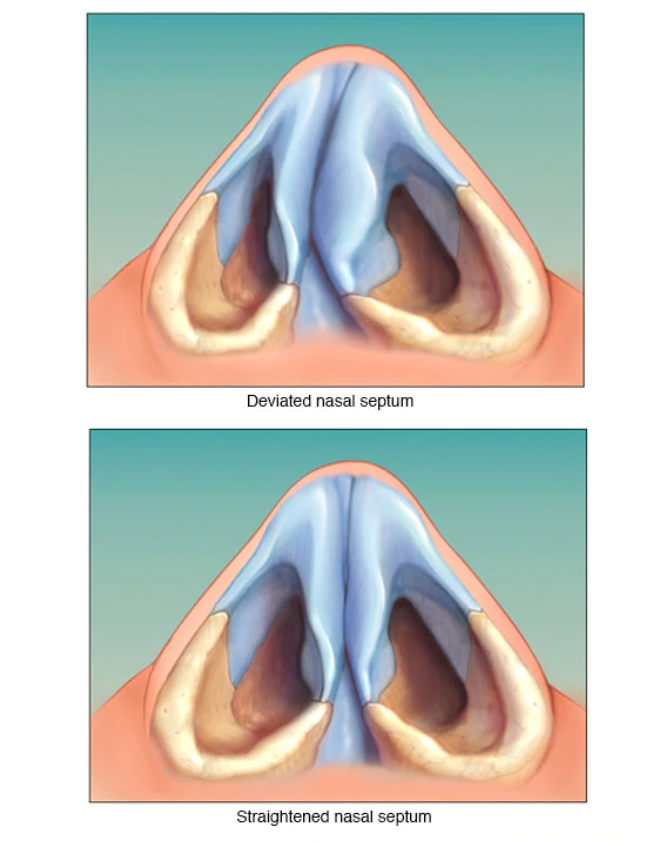Correction of Deformed Septum
बार-बार जुकाम होने की वजह हो सकता है डेविएटेड सेप्टम
Deviated Septum
यह नाक के पर्दे या झिल्ली से जुड़ी समस्या है। यह नाक मार्ग के बीचों बीच पतली दीवार (नाक के पट) है, जो दोनों नाक के बीच स्थित होता है। डेविएटेड सेप्टम (Deviated septum) में यह सरक कर एक तरफ विस्थापित हो जाता है। जिससे एक और का नाक का छिद्र छोटा या बंद हो सकता है।
यह नाक को एक तरफ से ब्लॉक कर सकता है और एयरफ्लो को कम कर सकता है। जिससे सांस लेने में कठिनाई होती है। कभी-कभी इसके कारण नाक से ब्लीडिंग भी होने लगती है।
What is Septoplasty?
Septoplasty is a surgical procedure to straighten the bone and cartilage dividing the space between your two nostrils (septum). When the septum is crooked, it’s known as a deviated septum. A deviated septum can make it harder to breathe through your nose and can increase the risk of sinus infections due to poor drainage.
During septoplasty, your nasal septum is repositioned to the middle of your nose. This may require your surgeon to cut and remove parts of your nasal septum before reinserting them in the proper position.
#Deviated Septum Treatment in Udaipur #Deviated Septum Surgery in Udaipur #Septoplasty Surgery in Udaipur #Kaushik ENT Hospital – Udaipur #Dr. Shiv Shanker Kaushik (ENT Specialist in Udaipur)
Risks
As with any major surgery, septoplasty carries risks, such as bleeding, infection and an adverse reaction to the anesthetic. Other possible risks specific to septoplasty include:
- Continued symptoms, such as nasal obstruction
- Excessive bleeding
- A change in the shape of your nose
- A hole in the septum
- Decreased sense of smell
- Clotted blood in the nasal space that has to be drained
- Temporary numbness in the upper gum, teeth or nose
You may need additional surgery to treat some of these complications. You may also need additional surgery if the outcome of septoplasty doesn’t match your expectations. Talk to your doctor about your specific risks before surgery.
Results of Septoplasty Surgery
By three to six months after surgery, your nasal tissues will be relatively stable. It’s still possible that cartilage and tissue may gradually move or reshape over time. Some changes can still occur for up to a year or more after surgery.
Most people find that septoplasty improves their symptoms, such as difficulty breathing, that were caused by a deviated septum. The level of improvement you can expect with septoplasty varies by person.
Some people find that their symptoms continue even after surgery and opt to undergo a second septoplasty to further refine the nose and septum.


